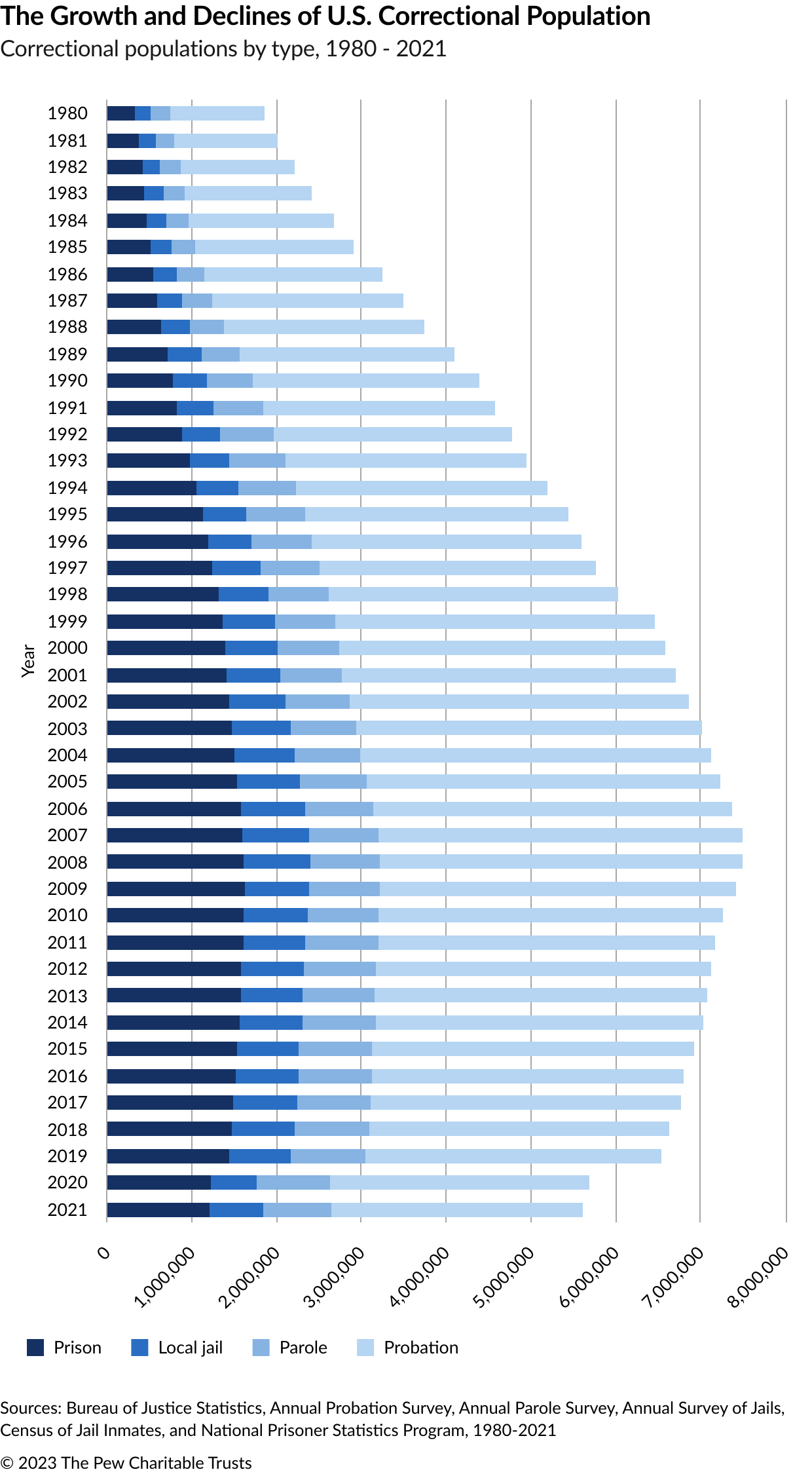Number of U.S. Adults on Probation or Parole Continues to Decline
Collected Pew research and policy recommendations show how states are shrinking the number of people on community supervision while protecting public safety

Editor’s note: This page was updated Feb. 7, 2024, with descriptive wording corrections throughout.
Nationwide, nearly 3.7 million people—or 1 in 69 adults—were on probation or parole in the U.S. at the end of 2021. Although supervision rates have been declining since 2007—with the sharpest drop in 2019 (see figure below)—this population still outnumbers the people in local jails and state and federal prisons combined. And even though people on probation or parole make up the largest subset of individuals under correctional control, and such supervision systems can be drivers of incarceration themselves, they’re often overlooked by the media, researchers, and policymakers.

Beginning in 2006, The Pew Charitable Trusts and its partners advanced data-driven policies that sought to protect public safety, ensure accountability, and reduce prison populations and corrections costs; these policies often included community supervision reform. In 2017, to call attention to this population and the unique challenges of supervision systems, Pew devoted additional resources to research and analysis on probation and parole to help policymakers and other stakeholders better understand the high stakes and missed opportunities of supervision policies. Three main goals guided Pew’s policy consultation and research agenda for this work:
- Produce better outcomes for people on supervision.
- Reduce the time people spend incarcerated for violations that do not threaten public safety.
- Safely reduce the community supervision population to maintain the well-being of individuals and communities and produce more cost-effective public safety outcomes.
The backbone of this effort was a set of policies developed by an 18-member advisory committee in partnership with Arnold Ventures, and with research support from the Robina Institute of Criminal Law and Criminal Justice at University of Minnesota. A dozen national organizations endorsed this policy framework, and many states took notice. Since late 2020, at least 20 states have passed measures to update and improve their community supervision systems.
Over six years, Pew advised state policymakers on best practices for community supervision. Pew also released numerous publications exploring the characteristics of those on probation and parole, their experiences, and the key policies to support better outcomes and supervision practices. Still, caseloads remain high and resources remain limited. Many people on probation and parole struggle with a serious or moderate mental illness—a critical factor that can make it challenging to follow the rules of supervision. And, despite this large population of individuals with a mental health issue, few probation agencies have the tools or training to support their needs. You can learn more about Pew’s research on the intersection of the legal system and mental health.










